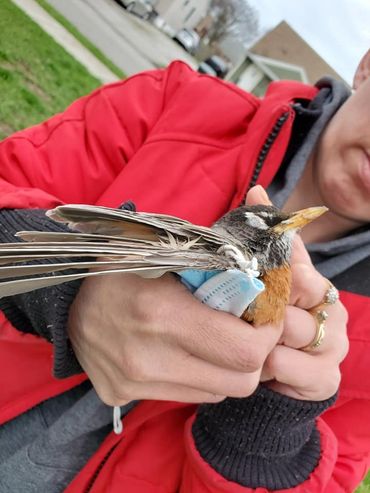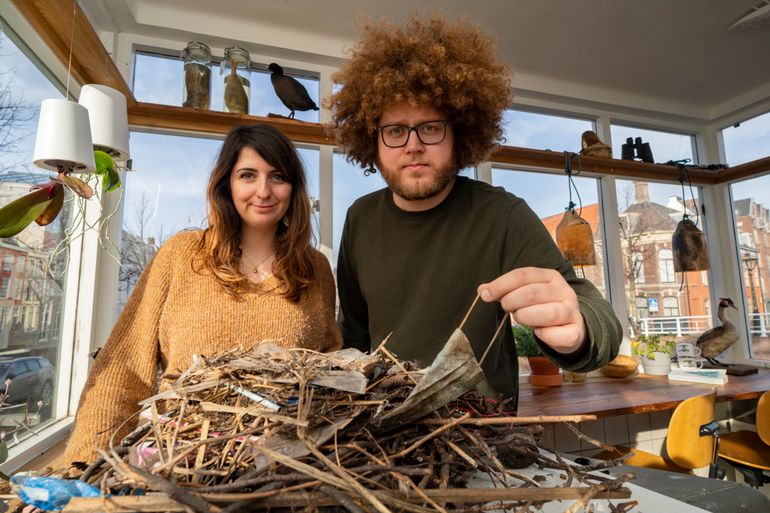
Dutch biologists need your help: how bad is our corona waste for animals?
Leiden University, Naturalis Biodiversity CenterIt all started when litter researchers found a perch in the canals of Leiden that had become caught up in a latex glove. As far as we know, this was the first Dutch victim of corona waste. Since then, they have been trying to obtain an overall picture of the consequences of the mountain of corona waste for animals.
Biologists Auke-Florian Hiemstra from Naturalis Biodiversity Center and Liselotte Rambonnet from Leiden University started a quest to determine how often and where interactions between corona waste and animals occur. They collected observations from Brazil to Malaysia and from social media to local newspapers and international news websites. A fox in the United Kingdom, birds in Canada, hedgehogs, seagulls, crabs and bats – it quickly transpired that all sorts of animals, everywhere, become entangled in face masks.
Penguin
 They found reports about apes chewing on face masks, and about a penguin with a face mask in its stomach. Pets too, especially dogs, were found to swallow face masks. “Animals become weakened due to becoming entangled or starve due to the plastic in their stomach,” Rambonnet emphasizes. The diversity of animals influenced by corona waste is considerable. “Vertebrates and invertebrates on land, in freshwater, and in seawater become entangled or trapped in corona waste,” says Hiemstra. In their overview article in the journal Animal Biology, they also write that some animals use the waste as nest material. For example, coots in Dutch canals use face masks and gloves as nest material. “And the packaging from paper handkerchiefs is found in nests too. As such, we even see the symptoms of COVID-19 in animal structures,” says Hiemstra.
They found reports about apes chewing on face masks, and about a penguin with a face mask in its stomach. Pets too, especially dogs, were found to swallow face masks. “Animals become weakened due to becoming entangled or starve due to the plastic in their stomach,” Rambonnet emphasizes. The diversity of animals influenced by corona waste is considerable. “Vertebrates and invertebrates on land, in freshwater, and in seawater become entangled or trapped in corona waste,” says Hiemstra. In their overview article in the journal Animal Biology, they also write that some animals use the waste as nest material. For example, coots in Dutch canals use face masks and gloves as nest material. “And the packaging from paper handkerchiefs is found in nests too. As such, we even see the symptoms of COVID-19 in animal structures,” says Hiemstra.
Citizen Science
The scientists from Leiden were able to create their overview thanks to the observations of photographers, litter collectors, birdwatchers, wildlife rescue centers, and veterinarians who shared the observations via social and traditional media. Rambonnet: “As a result of this, we can learn more about the impact of this category of disposable products on wildlife. We therefore ask people to keep sharing their observations so that we can maintain an up-to-date overview.” To facilitate this, the duo has set up the website Covidlitter.com. Rambonnet and Hiemstra hope that this overview will increase people’s awareness of the danger of face masks and gloves for wildlife. Furthermore, they call upon everybody to use reusable face masks.

More information
Text: Bart Braun, Naturalis Biodiversity Center
Photos: Auke-Florian Hiemstra, Naturalis Biodiversity Center (lead photo: latex glove in which a perch was trapped in the cannals of Leiden); Sandra Denisuk; Alexander Schippers
